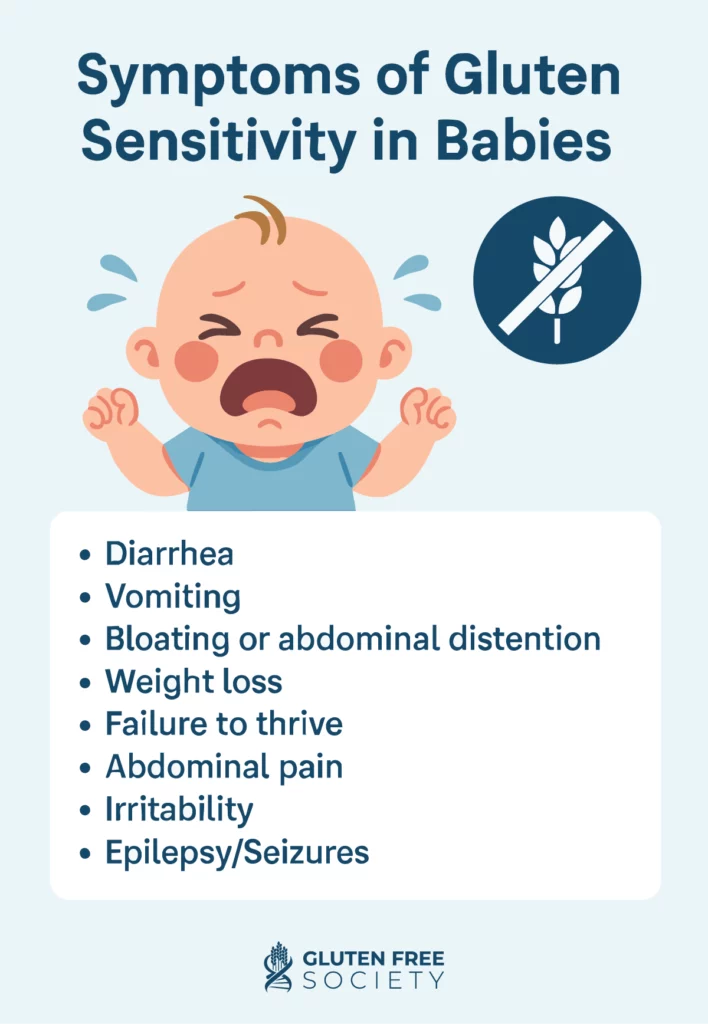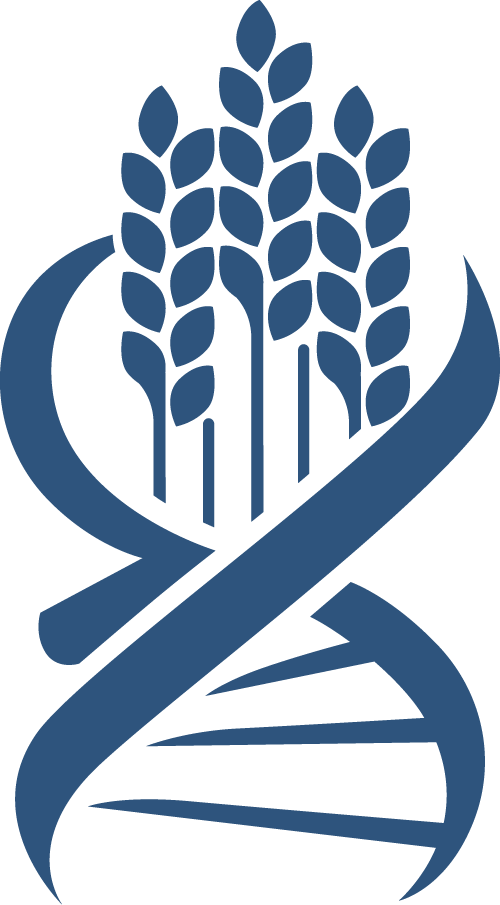new to the gluten free journey?
new to the gluten free journey?

Celiac disease, a dietary mystery known by millions of adults, is often a condition that presents itself later in life. But, celiac does not discriminate by age. While we are used to discussing gluten intolerance in grownups, it is important to recognize this disease can affect even the youngest members of our world. Celiac disease in babies is a concept we often overlook, but in this article we will delve into the topic, and explore the challenges and strategies associated with navigating the condition at an early age.
Contents
ToggleCeliac Disease is an autoimmune disorder that affects 1% of the population. This occurs when the body reacts negatively to gluten, a protein found in wheat, barley, rye, and other grains.
When individuals with celiac disease consume gluten, it causes damage to the small intestine and interferes with the absorption of nutrients, and triggers your immune system to produce antibodies against it. These antibodies damage the lining of your small intestine. Celiac disease has a genetic component, meaning you are more likely to have celiac disease if a direct relative has it.
The symptoms of celiac disease in adults can vary greatly from person to person which can make a diagnosis challenging. Common symptoms of celiac disease span far beyond the typical gastrointestinal symptoms that are commonly discussed. Symptoms of celiac disease may include the following:
Symptoms in adolescents and children can be similar to those in adults, as listed above. However, children can face additional symptoms. Many of these symptoms are related to the fact that celiac disease can cause nutrient deficiencies which then lead to further challenges in growth and development. For example, common symptoms for children include the following:
In addition, other symptoms commonly seen in children include early onset autoimmune diseases, eczema, asthma, constipation. While some children appear malnourished or thin, others may experience obesity due to compromised gut health.
So, how common is celiac disease in babies? We don’t know for certain, but we do know that between 10–20% of people with a first-degree relative (a sibling, parent, or child) with celiac disease will also develop celiac disease. In addition, research has found that the biopsy-proven prevalence of celiac disease is approximately two times higher in children than adults.
Despite increased awareness and more frequent testing, up to 95% of celiac patients still remain undiagnosed. Early diagnosis is very important to prevent long-term and potentially serious health complications.
Celiac disease symptoms may start to develop any time after wheat or other gluten containing foods are introduced into the diet. However, some children become sick early in life and others do not become sick until after several years of exposure. It is not clear why this happens, but the range of possible symptoms, and the lag in time for some symptoms to manifest (e.g., the negative effects of nutrient deficiencies), may play a role in delayed diagnosis.
Infants and older babies tend to have more obvious symptoms that manifest in the gastrointestinal tract. These symptoms may include, but are not limited to, the following:

Approximately 83% of infants engage in some amount of breastfeeding between birth and six months old. So is breast milk gluten free? Can gluten pass through breast milk?
One study found that high concentrations of gluten proteins were found in the milk of breastfeeding women who consumed gluten. The study demonstrated that even after being on a gluten restricted diet for 3 days, gluten proteins were still present in the breast milk. It was found that the gluten/gliadin proteins were not degraded but still intact.
However, this shouldn’t deter a mother from breastfeeding. Gluten proteins will eventually no longer be present in breast milk when a mother eliminates gluten from her diet. In addition, breast milk provides a tremendous amount of immune, gut, and other health benefits. If you choose to use formula, make sure the company is certified gluten free to ensure there is no hidden gluten.
While celiac disease can occur in anyone and can show up at any age, some people are at higher risk for developing it. This includes those with any of the following:
Another risk factor for celiac disease is the presence of genes known as human leukocyte antigen (HLA) DQ2 and DQ8. Research found that babies who have a genetic susceptibility to celiac and then ingest gluten are at greater risk of developing celiac disease than those who do not consume gluten. Another study had similar findings for toddlers (ages one and two).
This carries on into early childhood, as another study found that increased intake of gluten during the first 5 years of life was an independent risk factor for celiac disease autoimmunity and celiac disease in genetically predisposed children. This is a classic example of the theory that “genes load the gun, environment pulls the trigger.
A celiac disease diagnosis often starts with a blood test to check for gluten-specific antibodies in the blood. It may also include an endoscopy to examine the small intestine for damage to the intestinal villa. However, these methods can be inaccurate or difficult to perform in babies. Genetic testing is a more accurate and less invasive diagnostic tool. It looks at your genes to understand whether you have a genetic predisposition to reacting to gluten. Make sure to get a test that measures for all genes linked to gluten sensitivity (HLA-DQ1/HLA-DQ3) and celiac disease (HLA-DQ2/HLA-DQ8). Some tests only check for genes linked to celiac disease.
If you want to learn more before you start digging into a diagnosis, check out our Gluten Sensitivity Quiz and Glutenology Master Class.
And remember, if you do get a celiac disease diagnosis, finding a practitioner who is well versed in pediatric celiac disease cases, and engaging in consistent follow up care and education is critical to long term health.
There are a number of recognized complications linked to chronic gluten exposure in those with undiagnosed celiac disease that can impact health, quality of life, and risk of early death. These may include the following:
It is important to note that managing celiac disease through a strict gluten free diet helps to mitigate the risk of many of these complications.
The journey of navigating health uncertainties with your child and getting a celiac diagnosis can feel stressful and overwhelming. We aim to be a source of trusted information along the way. Remember that you are the best advocate for your child. If you are not feeling that you are getting the best care, or that your concerns are not being adequately addressed, we encourage you to seek a second (or third!) opinion.
Just like adults, symptoms of celiac disease look different for different children. If your child is experiencing any unusual symptoms, we encourage you to explore testing for celiac disease. Gluten Free Society is here to arm you with information and resources to guide your journey.
Stay up-to-date with the latest articles, tips, recipes and more.

*These statements have not been evaluated by the Food and Drug Administration. This product is not intended to diagnose, treat, cure or prevent any disease.
If you are pregnant, nursing, taking medication, or have a medical condition, consult your physician before using this product.
The entire contents of this website are based upon the opinions of Peter Osborne, unless otherwise noted. Individual articles are based upon the opinions of the respective author, who retains copyright as marked. The information on this website is not intended to replace a one-on-one relationship with a qualified health care professional and is not intended as medical advice. It is intended as a sharing of knowledge and information from the research and experience of Peter Osborne and his community. Peter Osborne encourages you to make your own health care decisions based upon your research and in partnership with a qualified health care professional.